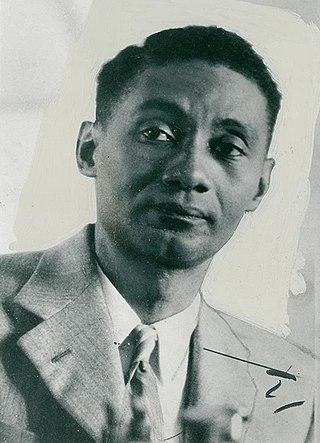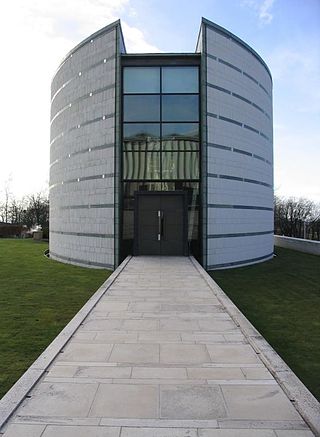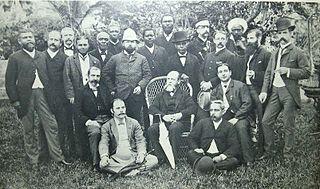History
The MacCormac family descends from the union of John MacCormac, (d. 1811), a prosperous linen merchant and Mary Ann Hall, (1766-1846), a wealthy heiress and daughter of Colonel Joseph Hall, a notable distiller in County Armagh. John MacCormac was the son of Cornelius MacCormac, a high-ranking naval officer who died after falling aboard a vessel.
The precise origins of the MacCormac family of County Armagh are unclear and it does not appear as though the family was of Scottish descent. The family may have descended from the family of Archbishop Cornelius MacCormac of Armagh, who was a clergyman in late seventeenth century Ireland. The origins of the Hall family are probably in England or Scotland, although the name may be an anglicised version of a traditionally Irish surname.
Medicine
The medical strand in the MacCormac family began with Henry MacCormac, (1800-1886), the son of John MacCormac and Mary Ann MacCormac. Henry MacCormac qualified as a medical doctor in Dublin, Paris, and earned a Medical Doctorate from the University of Edinburgh in 1824. It is primarily from Henry MacCormac's lineage that the notable MacCormac dynasty descend, although his elder brother, Hon. John MacCormac was the progenitor of the Easmon medical family, a West African medical dynasty. Dr Henry MacCormac married Mary Newsam, the daughter of William Newsam, a linen merchant, descended from an old English family that settled in Ireland in 1640.
Henry MacCormac and Mary Newsam MacCormac were the parents of Sir William MacCormac, 1st Baronet, the most decorated surgeon of the late nineteenth century, who served as Serjeant-Surgeon to King Edward VII. The grandson and namesake of Dr Henry MacCormac, was a dermatologist and the father of architect, Sir Richard MacCormac.
McCormack is a family name (surname) that originated in Ireland Milltown Galway Spelling variations: Cormack, MacCormack, MacCormac, McCormac, Cormac, Cormach.

The O'Donnell dynasty were the dominant Irish clan of the kingdom of Tyrconnell in Ulster in the north of medieval and early modern Ireland.

Sir William MacCormac, 1st Baronet, was a notable British surgeon during the nineteenth and early twentieth centuries. MacCormac was a strong advocate of the antiseptic surgical methods proposed by Joseph Lister and he served in conflicts such as the Boer War. An advocate and pioneer of the Royal Army Medical Corps, MacCormac was perhaps the most decorated surgeon in Britain and he served as Serjeant Surgeon to Edward VII.

John Farrell Easmon, MRCS, LM, LKQCP, MD, CMO, was a prominent Sierra Leonean Creole medical doctor in the British Gold Coast who served as Chief Medical Officer during the 1890s. Easmon was the only West African to be promoted to Chief Medical Officer and he served in this role with distinction during the last decade of the 19th century. Easmon was a botanist and a noted expert on the study and treatment of tropical diseases. In 1884, he wrote a pamphlet entitled The Nature and Treatment of Blackwater Fever, which noted for the first time the relationship between blackwater fever and malaria. Easmon coined the term "blackwater fever" in his pamphlet on the malarial disease.
Donlevy is an Irish surname derived from the Gaelic Mac Duinnshléibhe/Ó Duinnshléibhe 'son/descendant of Donn Sléibhe'; a given name meaning 'Donn of the mountain', i.e. 'dark mountain'. The MacDonlevys were the hereditary rulers of Dál Fiatach and styled as the Kings of Ulaid, i.e. rulers of (east) Ulster, in present-day County Down.

Raymond Sarif Easmon was a prominent Sierra Leonean doctor known for his acclaimed literary work and political agitation.
Albert Whiggs Easmon was a Sierra Leonean Creole medical doctor and the half-brother of Dr John Farrell Easmon. Easmon was among the first group of Sierra Leoneans to qualify as a medical doctor after getting a degree from Edinburgh University. He became the leading gynaecologist in Freetown, Sierra Leone and had an extensive private practice.

Charles Odamtten Easmon or C. O. Easmon, popularly known as Charlie Easmon, was a medical doctor and academic who became the first Ghanaian to formally qualify as a surgeon specialist and the first Dean of the University of Ghana Medical School. Easmon performed the first successful open-heart surgery in Ghana in 1964, and modern scholars credit him as the "Father of Cardiac Surgery in West Africa". Easmon was of Sierra Leone Creole, Ga-Dangme, African-American, Danish, and Irish ancestry and a member of the distinguished Easmon family, a Sierra Leone Creole medical dynasty of African-American descent.

Sir Richard Cornelius MacCormac CBE, PPRIBA, FRSA, RA, was a modernist English architect and the founder of MJP Architects.

Robert Smith FRCSE (1840–1885) was a Sierra Leonean medical doctor who served as an Assistant Colonial Surgeon in Sierra Leone during the late nineteenth century. Smith was the first African to become a Fellow of the Royal College of Surgeons of Edinburgh after completing his medical studies at the University of Edinburgh.

Macormack Charles Farrell Easmon, OBE, popularly known as M. C. F. Easmon or "Charlie", was a Sierra Leone Creole born in Accra in the Gold Coast, where his father John Farrell Easmon, a prominent Creole medical doctor, was working at the time. He belonged to the notable Easmon family of Sierra Leone, a Creole family of African-American descent.
Easmon is a patronymic surname of English origin and is a variation of the surname Eastman. The surname is typically ascribed to a notable medical dynasty of Sierra Leone Creole descent. Notable people with the surname include:
Henry MacCormac, M.B, Ch.B, F.R.C.P., CBE, (1879-1950), was a notable dermatologist in Britain during the early twentieth century. MacCormac was a member of a distinguished medical family that included Henry MacCormac and Sir William MacCormac. Henry MacCormac also served as a captain in the Royal Army Medical Corps during the First World War.
Henry MacCormac was a notable 19th-century medical doctor and candidate for a chair at Queen's University in Northern Ireland. He was also a man of letters who corresponded with well-known Victorian-era intellectuals such as John Stuart Mill.
John MacCormac, was a distinguished Irish timber merchant who pioneered the timber trade in the Colony of Sierra Leone. John MacCormac was also the founder of the first Free Will Baptist church in Sierra Leone and served as a member of His Majesty's Colonial Council and was styled with the title of 'Honorable'. MacCormac was the grandfather and namesake of Dr John Farrell Easmon, the Chief Medical Officer of the Gold Coast Colony who coined the term 'Blackwater Fever' and wrote the first English-based clinical diagnosis of Blackwater fever.

The Easmon family or the Easmon Medical Dynasty is a Sierra Leone Creole medical dynasty of African-American descent originally based in Freetown, Sierra Leone. The Easmon family has ancestral roots in the United States, and in particular Savannah, Georgia and other states in the American South. There are several descendants of the Sierra Leonean family in the United Kingdom and the United States, as well as in the Ghanaian cities of Accra and Kumasi. The family produced several medical doctors beginning with John Farrell Easmon, the medical doctor who coined the term Blackwater fever and wrote the first clinical diagnosis of the disease linking it to malaria and Albert Whiggs Easmon, who was a leading gynaecologist in Freetown, Sierra Leone. Several members of the family were active in business, academia, politics, the arts including music, cultural dance, playwriting and literature, history, anthropology, cultural studies, and anti-colonial activism against racism.

Kathleen Mary Easmon Simango was a Sierra Leonean missionary and artist who was the first West African to earn a diploma from the Royal College of Art. She was the niece of Adelaide Casely-Hayford and was a personal friend of Samuel Coleridge-Taylor. Simango was also a member of the prominent Sierra Leone Creole Easmon family.
Edward Mayfield Boyle was a Sierra Leone Creole medical doctor who attended Harvard Medical School. Boyle, was one of the first West Africans to attend Howard University College of Medicine and was the maternal uncle of Edna Elliott-Horton, who was possibly the first West African woman to graduate from Howard University.
The Smith family is a Sierra Leone Creole family of English, Jamaican Maroon and Liberated African descent based in Freetown, Sierra Leone. The Smiths were first-generation Sierra Leone Creoles of Gold Coast Euro-African and Caribbean origin who settled in Sierra Leone during the early 19th century. There are several descendants of the family in the United Kingdom and the United States, as well as in the Ghanaian cities of Accra and Cape Coast. Several members of the family were active in business, women's education, civil administration, the arts, medicine, poetry, the judiciary, cultural studies, Pan-Africanism and anti-colonial activism.








